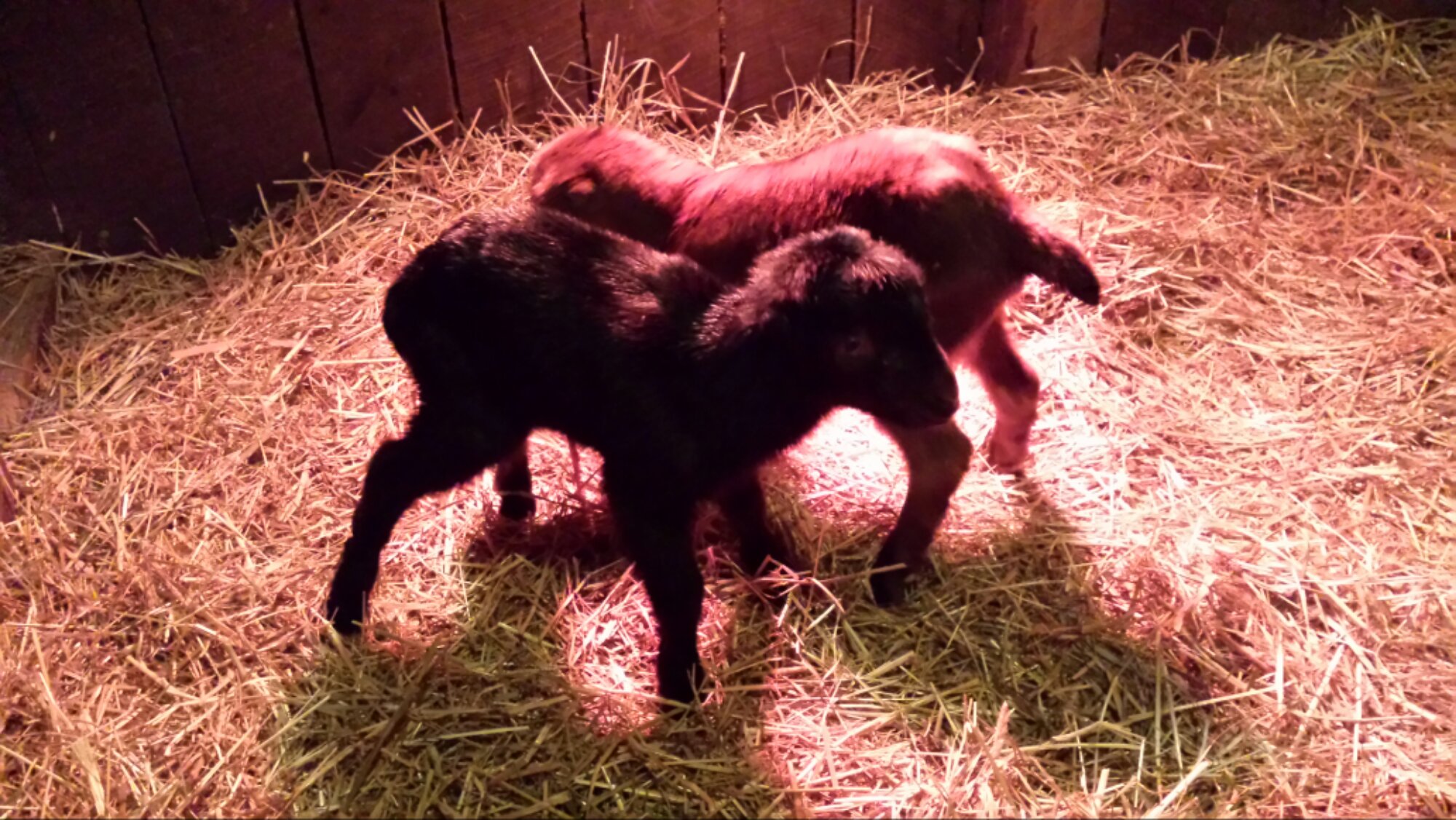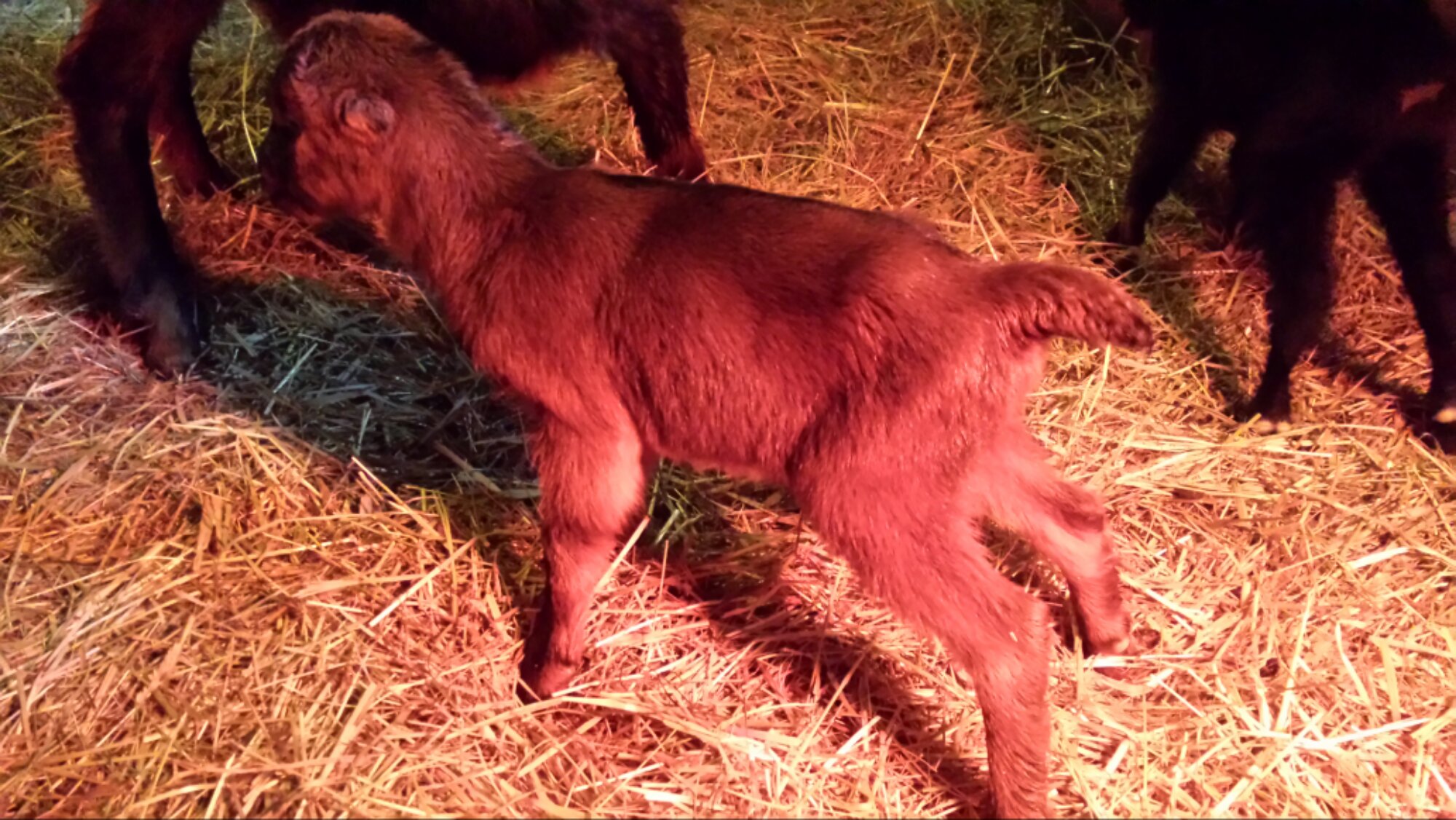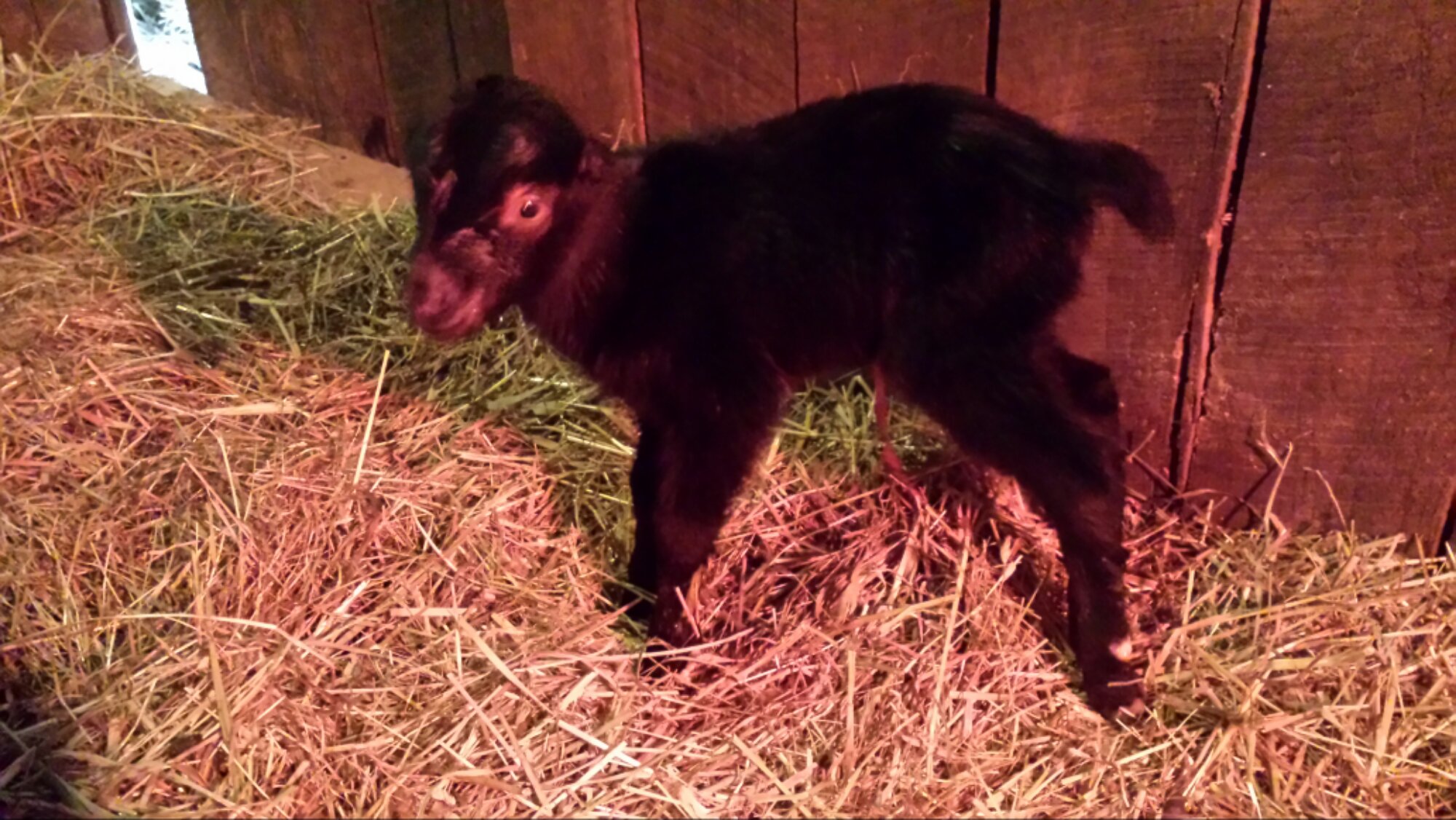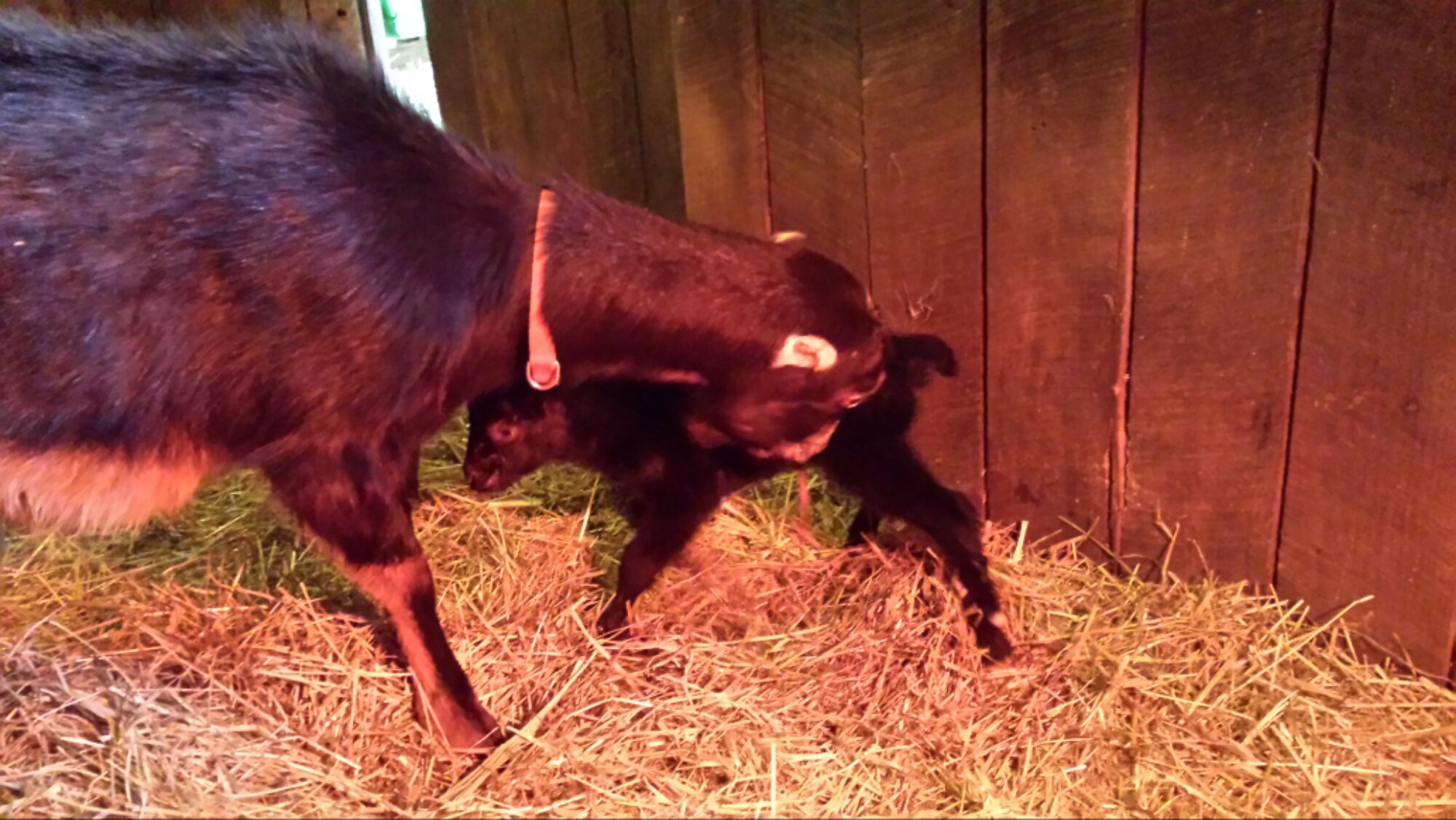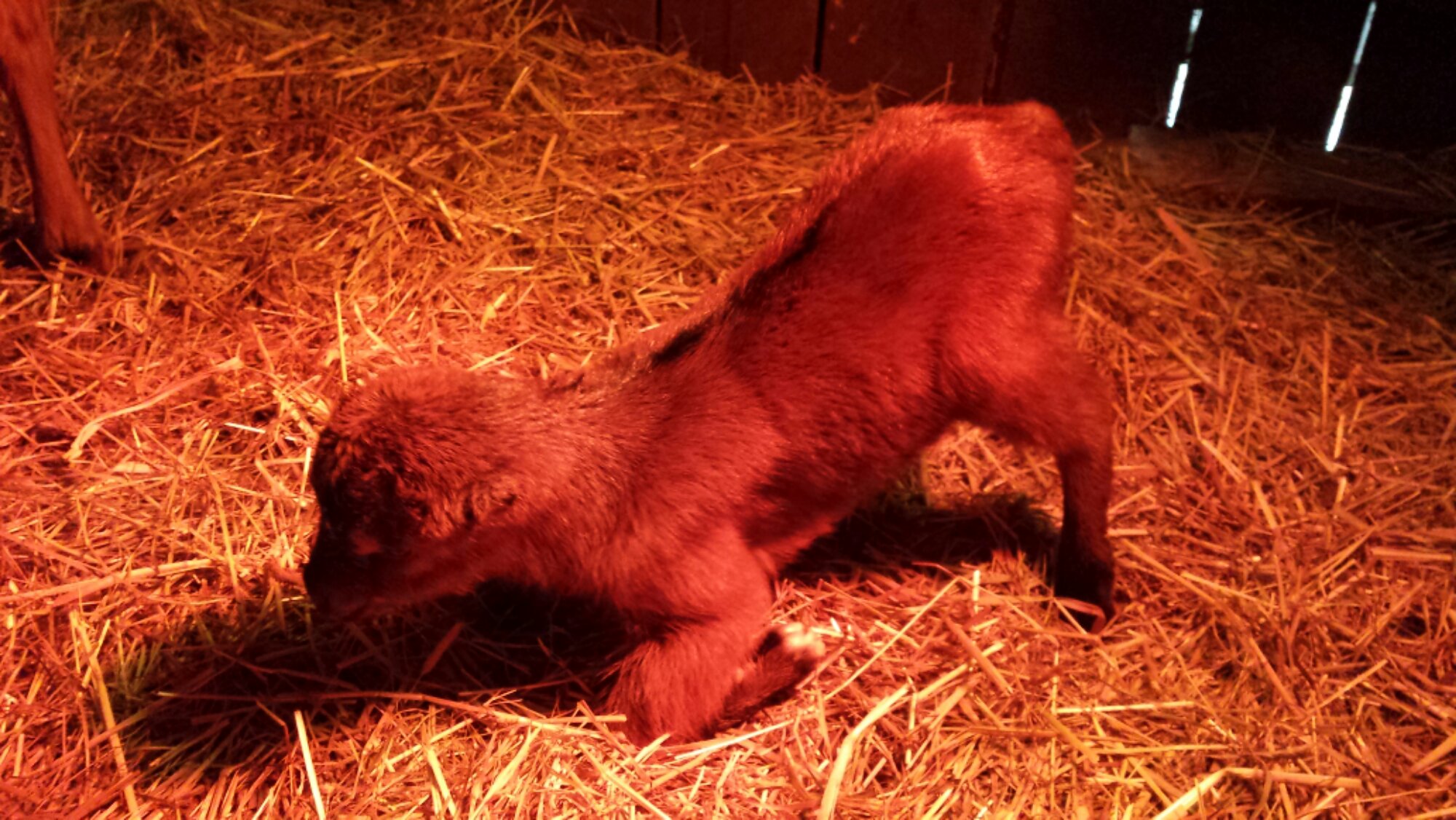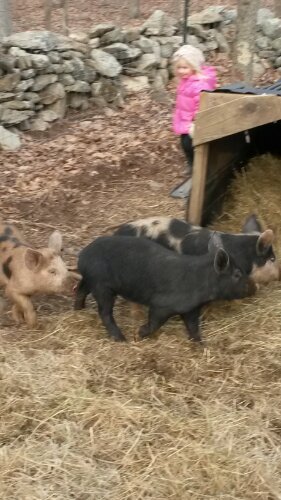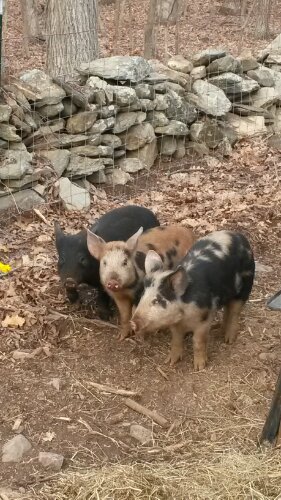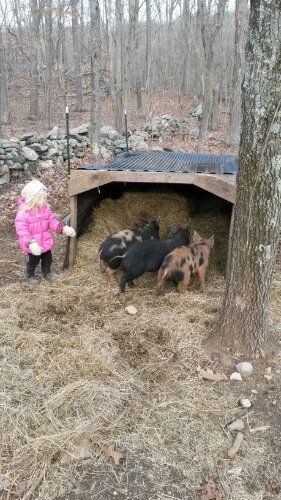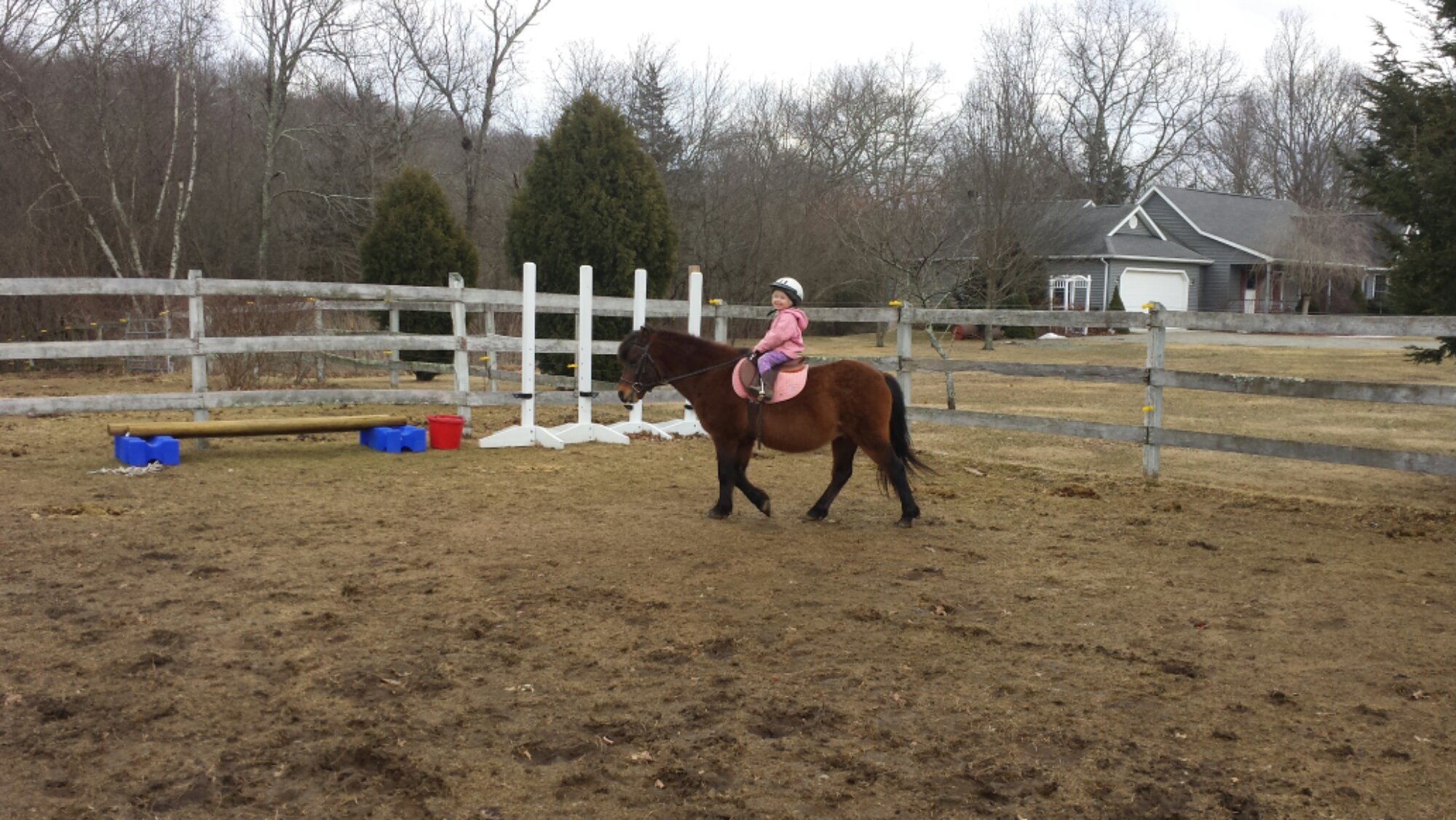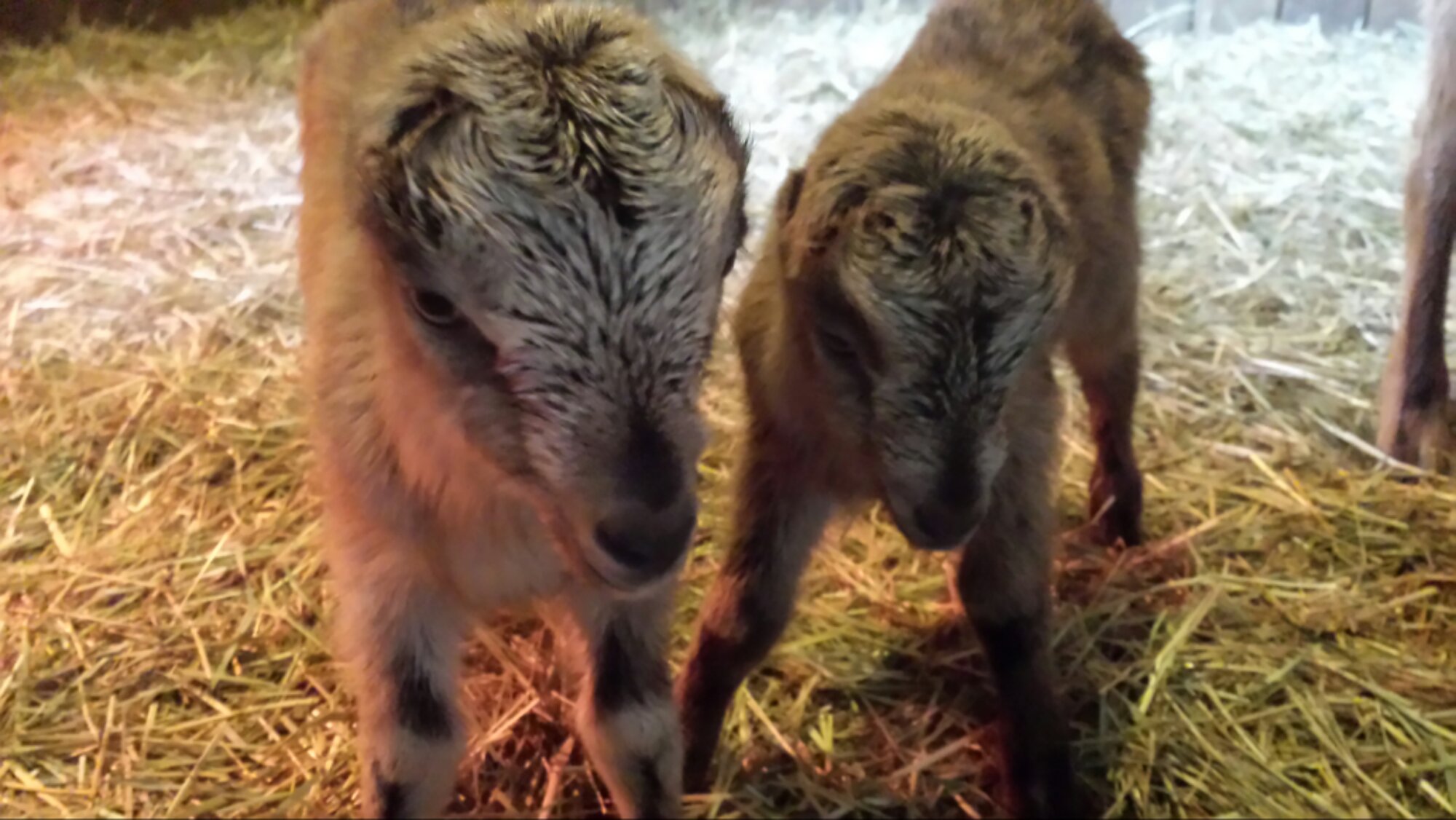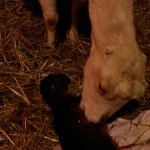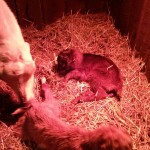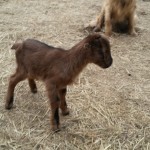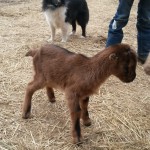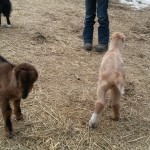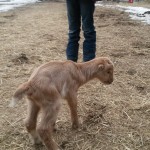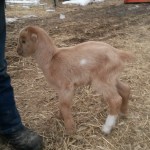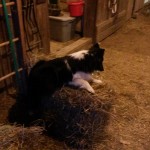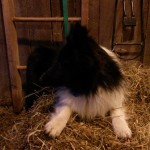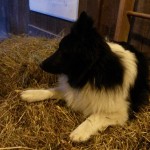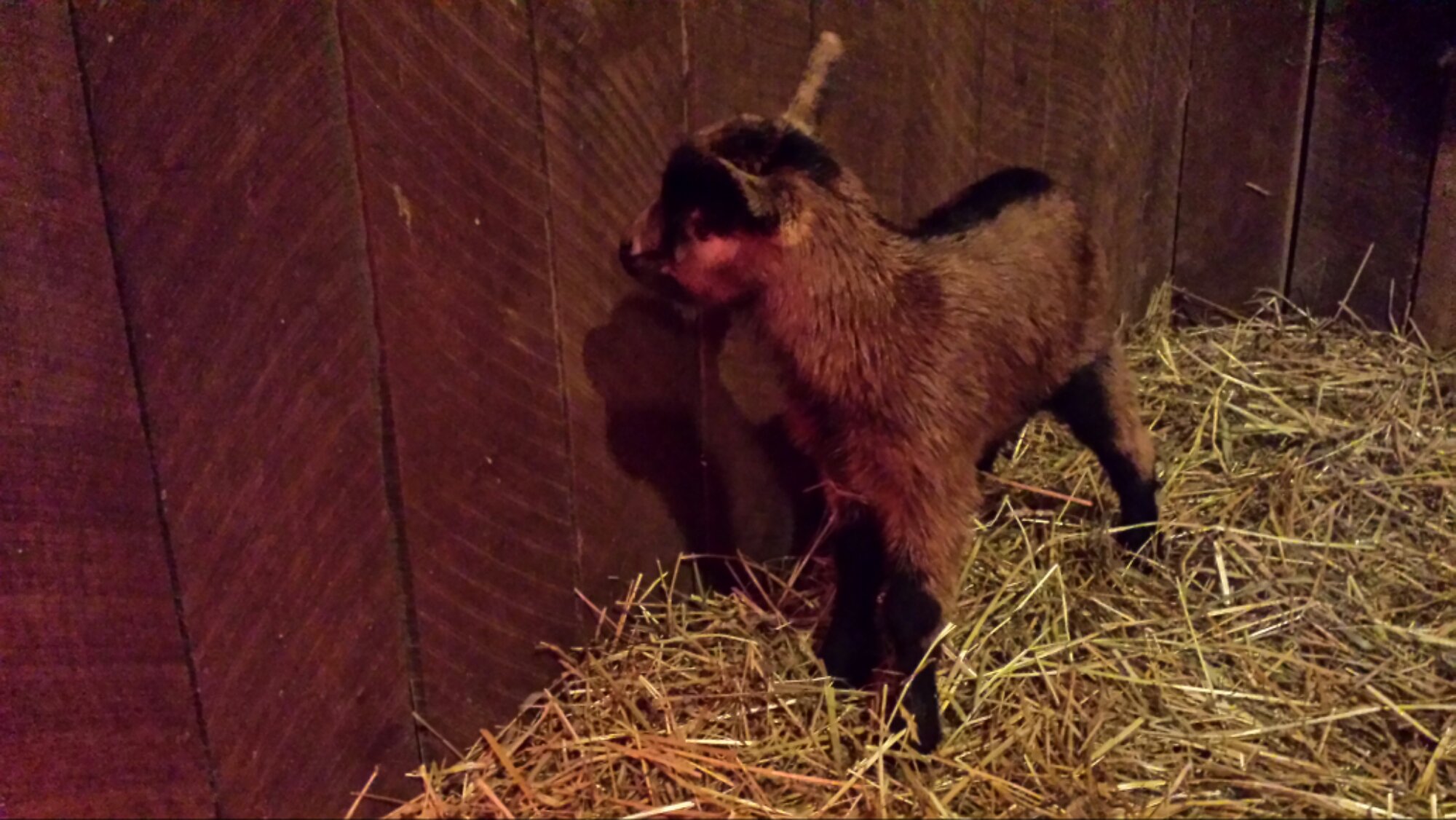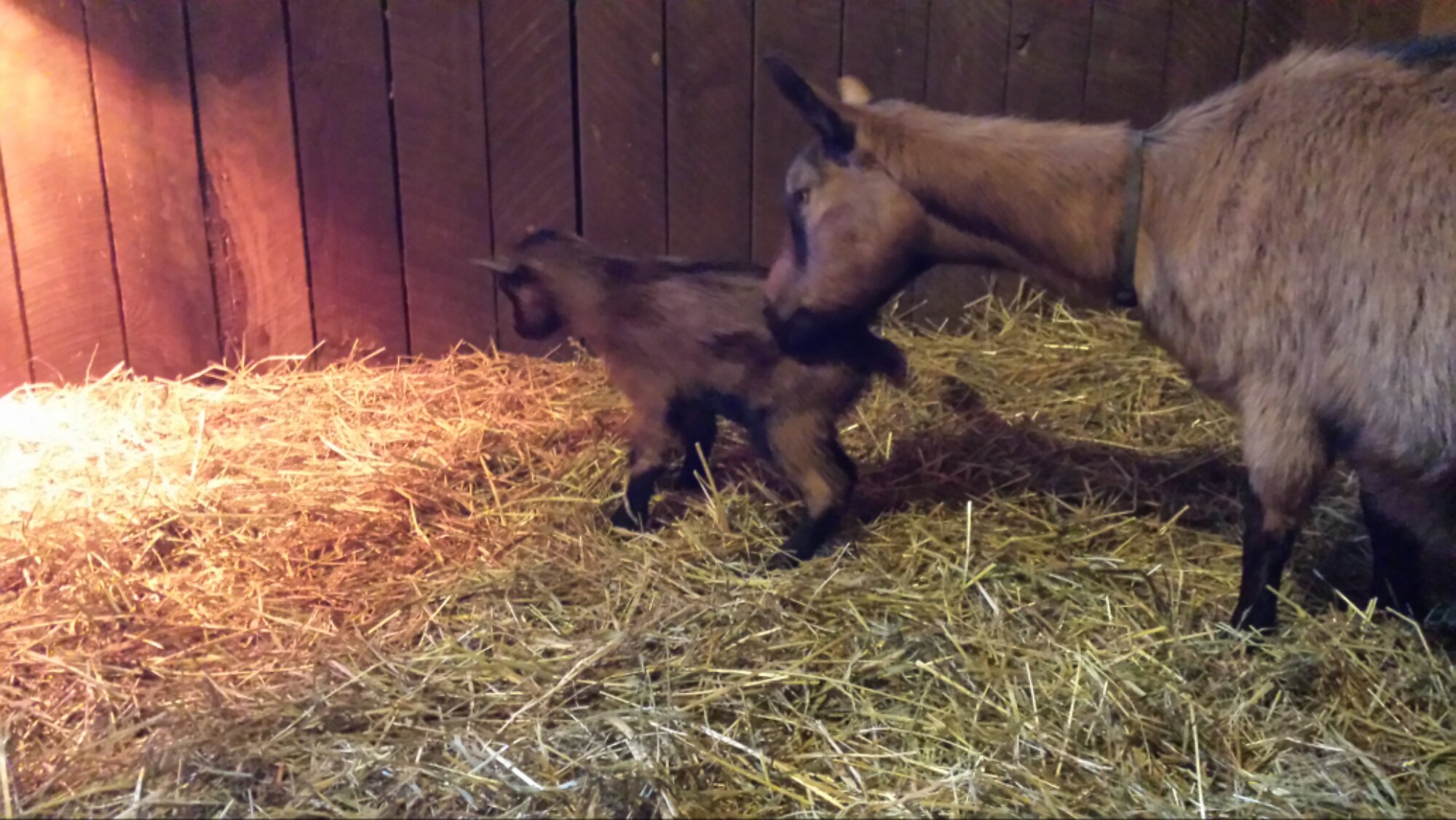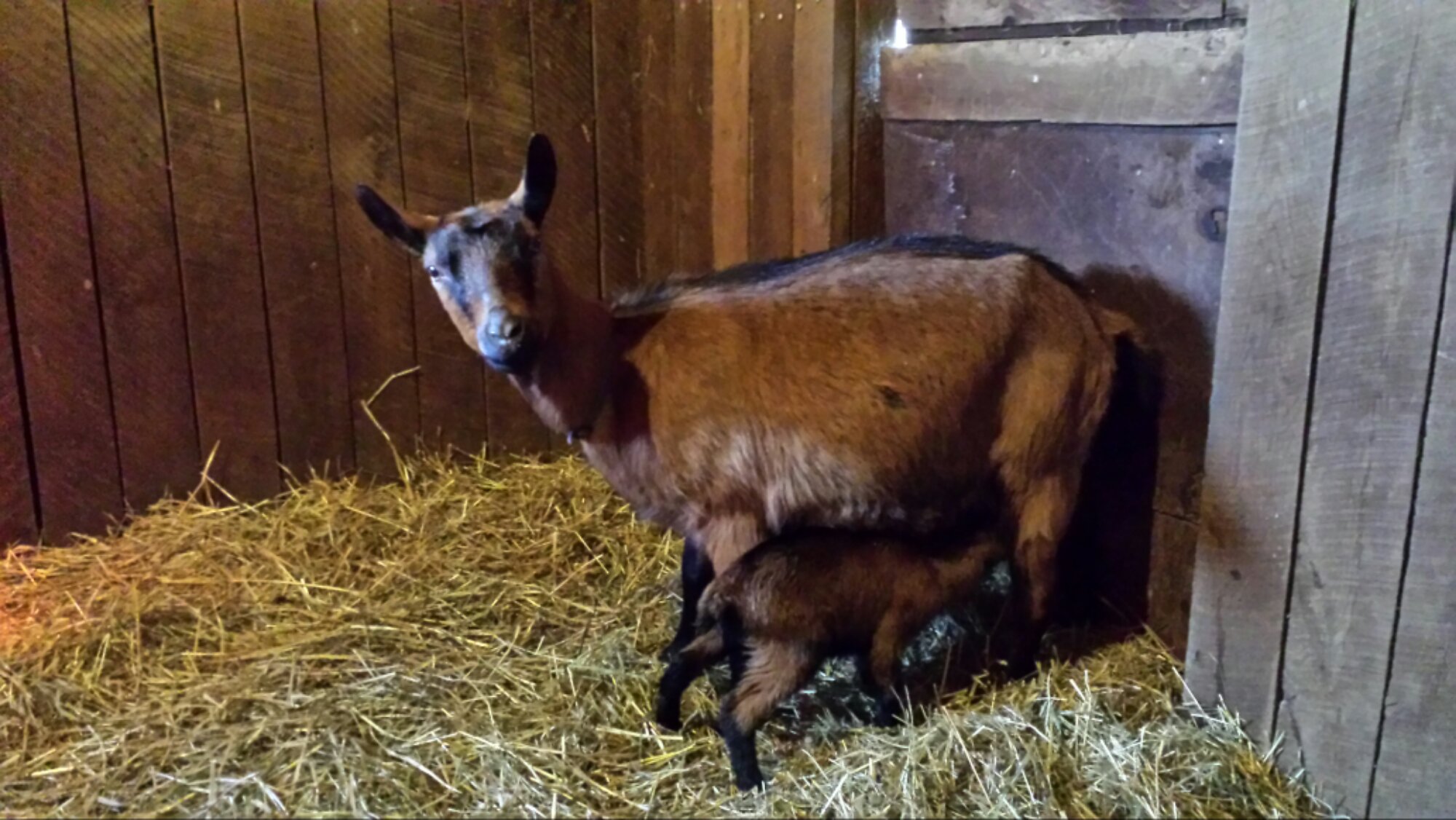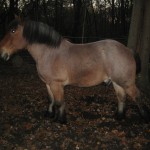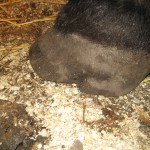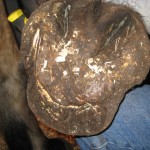It was over 50F this afternoon which was perfect weather for riding the horses. Vicki and her best friend Alexis (who takes riding lessons with Anna) hopped off the bus, had a quick snack, and headed to the barn. A short while later, they headed out on the trails – Alexis on Huey, Vicki on Devil, and Anna on King. It was Alexis’ first trail ride and they had a good time. When they got back, the group went to the arena for a little more riding and Amanda grabbed her helmet for a turn on Huey too.
By the time the girls got back, I had finished trimming Calli’s hooves and Alex and I saddled up. Alex mounted Dakota, while I was finishing in the barn with Calli. I heard a scuffle and then the sound of a running pony. I darted out of the barn with Calli in tow to find Alex on the ground at the start of the trail and Dakota about 50 yards away. Alex got up, brushed off, and slowly made his way to catch his pony. He and Dakota returned to the barnyard. By this time, Anna had arrived on scene and held Dakota as Alex mounted. Exactly what happened wasn’t clear, but it seems Dakota started walking away from the mounting block when Alex got on and Alex lost his balance. As his weight shifted around, it spooked Dakota more, eventually leading to Alex coming off. Luckily, no injuries.
So, Alex and I headed out. What would make this ride interesting was the high volume of rain we had last weekend. Every low area and creek was still flooded and Calli isn’t known for her confidence crossing water. This time, I tried a different approach. Our first water crossing after leaving the barn is about 150 yards down the trail. With the amount of rain we had, it is over 15′ wide, but only about 1 foot deep at the middle. Calli was nervous as soon as she saw the shimmer. So, I hopped off and lead her through the creek. I had planned for this and wore appropriate boots. I was also riding Calli in her new Dr. Cook’s bitless bridle set up with roping reins to make it easy for me to take have extra length to lead her as needed without being too close if she spooked.
It is hard to describe, but as I led her through, I felt her calm down. Everything about her behavior and body language signaled it. It was clear, she immediately trusted me more because I walked through the water with her. After that, I mounted and we headed on down the trail. When we came to the next water, Calli walked right through. Calli balked a couple of times at the third water crossing, but before I got off, the same calm came over her and she walked into the middle of the water, and reached down for a drink. While she stood there, Dakota (who had hung back as Calli threw her small fit) walked into the water with us. I wished there was someone on the side with a camera to catch the Alex and I on the horses in the water.
For the rest of the ride, Calli didn’t hesitate at any of the water we encountered. In total, we did 12-15 water crossings during our 40 minute ride.
The only other real excitement was while Alex and I were trotting down a road through the forest. We were almost side be side, when I saw panic come over his face and he started to slide right. At first I thought his saddle was rolling off Dakota’s back. I quickly stopped Calli, which caused Dakota to slow and allowed Alex to stop. It turns out, Alex had lost his right stirrup, and by lost, I mean his entire stirrup leather and iron had come off the stirrup bar and was laying in the road behind us. Nothing was broken, so I don’t know why it came off.
It definitely unsettled Alex, but a few minutes and a few water crossings later, we trotted along again. In the end, we had an awesome ride. Alex got thrown before the ride started, but got back on and did the ride. Calli overcame her water issues. And when we got home, Anna was exercising Precious in the arena. All 6 horses got ridden, and everyone in the family participated. It should be a good summer with a lot more rides!

